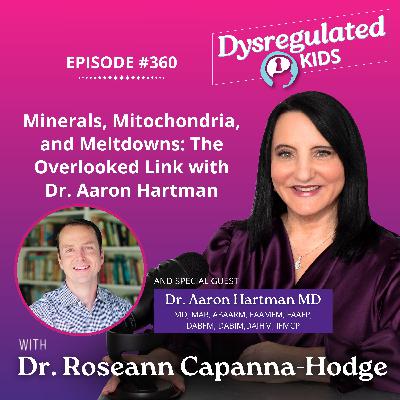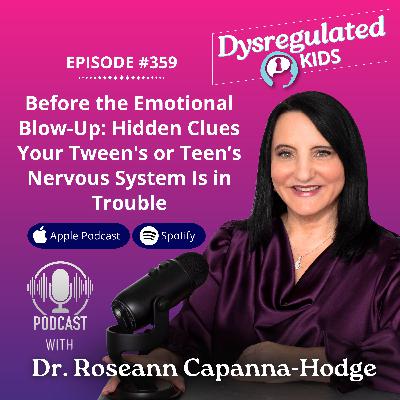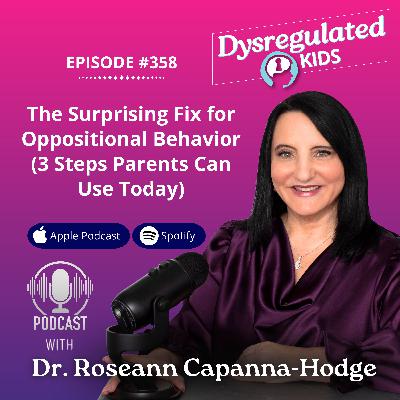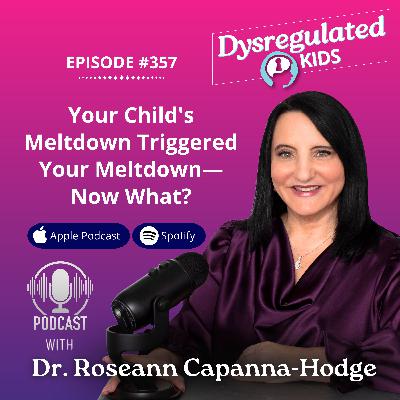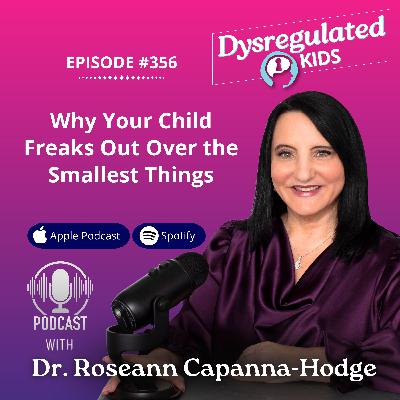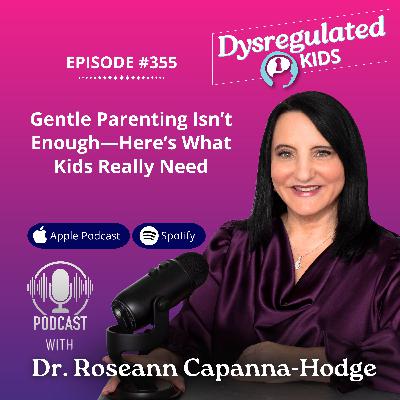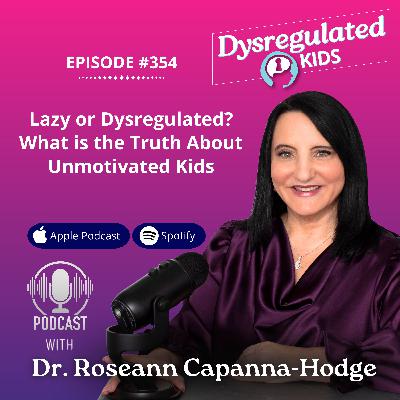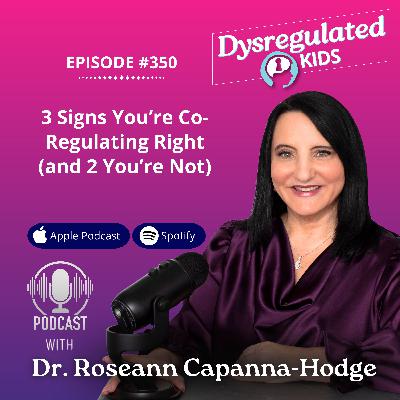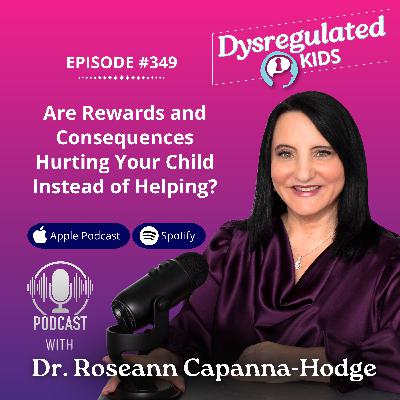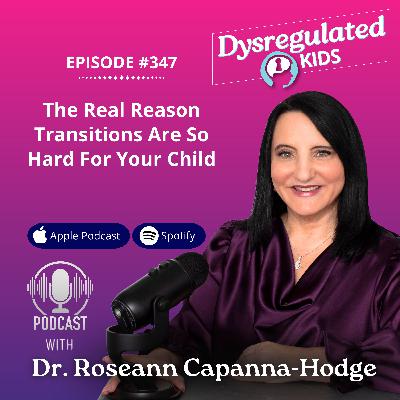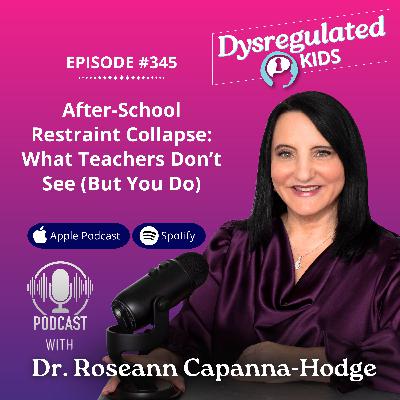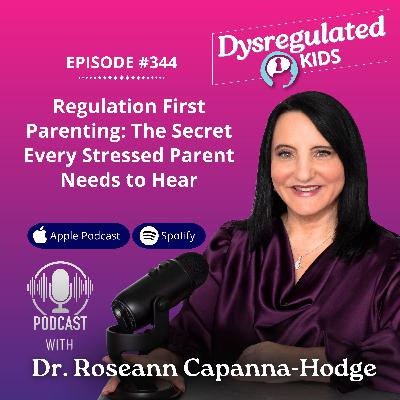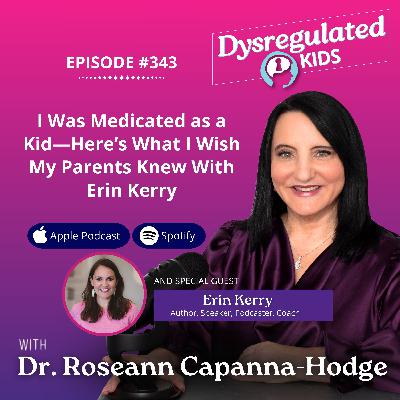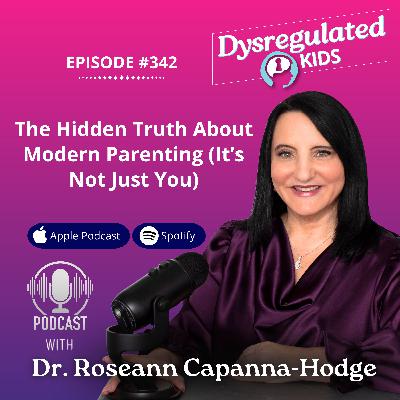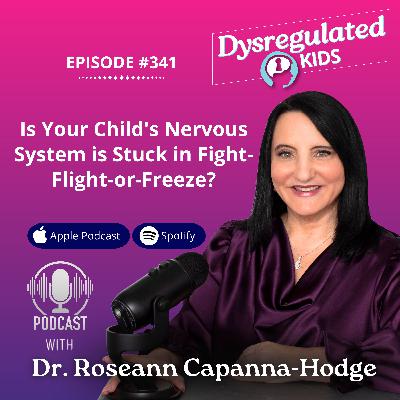346: How to Stay Calm When Your Kid Isn’t: Co-Regulation Parenting 101
Description
Some days it feels like your child’s big emotions are just too much—and your own stress boils over too. You’re not failing as a parent. What’s happening is called co-dysregulation—two nervous systems stuck in survival mode together.
This episode matters because when kids struggle to regulate emotions, they rely on your calming presence to learn how to do it. When you practice co-regulation parenting, you’re not just stopping meltdowns—you’re teaching your child lifelong emotional skills for resilience and self regulation.
In this episode, you’ll learn:
- What co regulation really means (and what it isn’t)
- Why kids mirror your nervous system—even without words
- Practical ways to pause, reset, and co regulate in difficult moments
Why does my child’s meltdown make me lose it too?
When your child is in distress, your nervous system naturally reacts. This can feel overwhelming, especially if you weren’t modeled healthy emotional regulation growing up.
- It’s not bad parenting—it’s a dysregulated brain. Your child’s cues trigger your own stress responses.
- Mirror neurons mean your child learns to regulate emotions by watching you.
- Chronic stress, fatigue, and past trauma can intensify your reaction.
Staying calm doesn’t come naturally—it’s a skill you practice over time, not perfection.
When your child is dysregulated, it’s easy to feel helpless.
The Regulation Rescue Kit gives you the scripts and strategies you need to stay grounded and in control.
Become a Dysregulation Insider VIP at www.drroseann.com/newsletter and get your free kit today.
How can I stay calm when my child has big emotions?
Your child learns best when you co-regulate in the moment. Instead of reacting, you anchor their storm with your calm.
- Pause before reacting. Take a deep breath, unclench your jaw, soften your facial expressions.
- Name what’s happening. Try phrases like, “I see you’re having a hard time. I’m here for you.”
- Offer gentle structure. Calm tone, clear expectations, and consistent limits help children feel safe.
- Practice self care. You can’t be a calming presence if you’re running on empty.
Parent Tip: Kids don’t just “catch” calm—they learn it through your regulated presence.
Want proven tools to stop meltdowns before they spiral? Quick Calm gives you step-by-step strategies to help your child reset their brain and bring calm back into your home.
What are examples of co-regulation strategies I can use today?
Co-regulation parenting isn’t about rescuing or fixing—it’s about providing structure and emotional support during tough moments.
- Slow breathing together. Invite your child to take deep breaths with you.
- Grounding through touch. A gentle touch or steady eye contact signals safety.
- Model naming emotions. Say, “I feel frustrated, so I’m taking a deep breath.”
- Practice in calm times. Just like athletes train before the big game, kids benefit from practicing coping strategies when things are calm.
Remember: A supportive environment helps children develop new skills for handling intense emotions.
What if my child never seems to calm down?
When children stay stuck in dysregulation, it can feel hopeless. But research suggests that consistent co-regulation helps children eventually learn to self regulate.
- Track your own triggers. Notice when your child’s distress sparks your stress responses.
- Respond, don’t rescue. Stay present, but don’t over-correct or fix.
- Seek extra support. If your child’s distress feels unmanageable, a trusted adult or therapist can help both of you.
🗣️ “You’re not alone. Parenting isn’t about being perfect—it’s about showing up with a regulated presence again and again.” – Dr. Roseann
Not sure where to start?
Take the guesswork out of helping your child.
Use our free Solution Matcher to get a personalized plan based on your child’s unique needs—whether it’s ADHD, anxiety, mood issues, or emotional dysregulation.
In just a few minutes, you'll know exactly what support is right for your family. Start here: www.drroseann.com/help
FAQs
How is co-regulation different from self regulation?
Self regulation is when kids manage their emotions independently. Co-regulation is when caregivers provide support—through calm voice, gentle touch, or structure—so children eventually learn to self regulate.
Does co-regulation really help children learn emotional skills?
Yes. Research suggests that children learn best by modeling. When parents practice co-regulating, kids develop stronger coping strategies, social skills, and emotional well being.
What should I do if my child refuses to calm down?
Stay close, keep your tone soft, and regulate your own stress responses. Your calm presence is more powerful than any words. Over time, your child learns to trust that safety.
Can co-regulation help with school meltdowns or after-school restraint collapse?
Absolutely. When kids unravel after school, they need co regulation strategies—quiet time, gentle connection, and a parent who understands that behavior is communication, not defiance.


